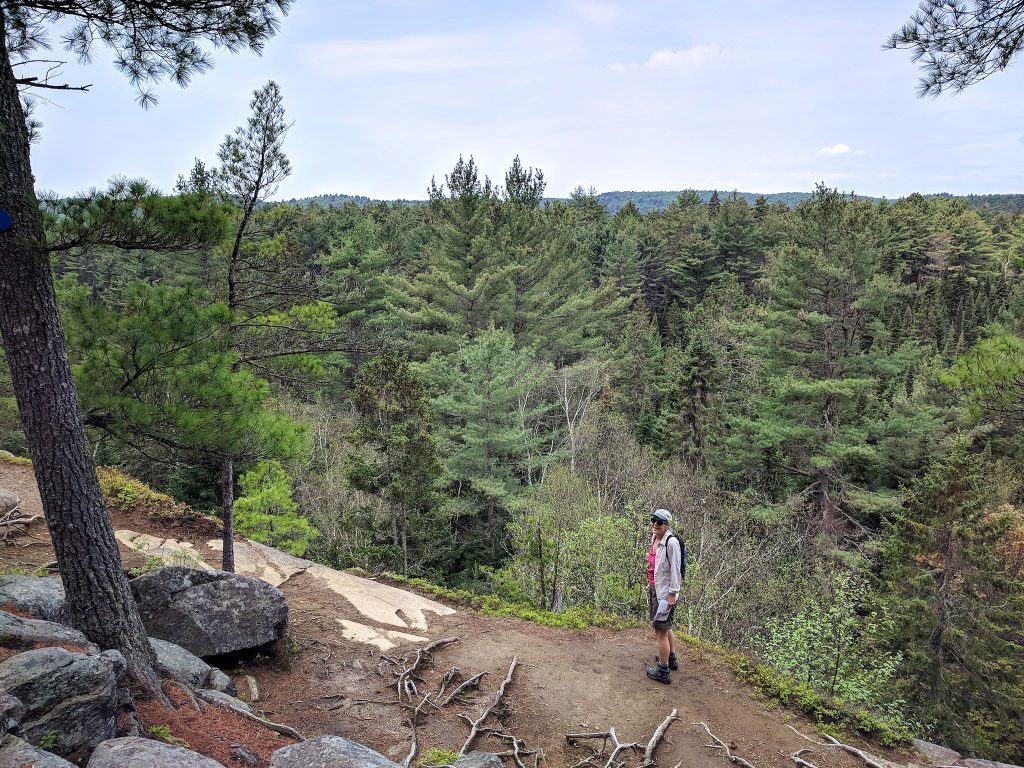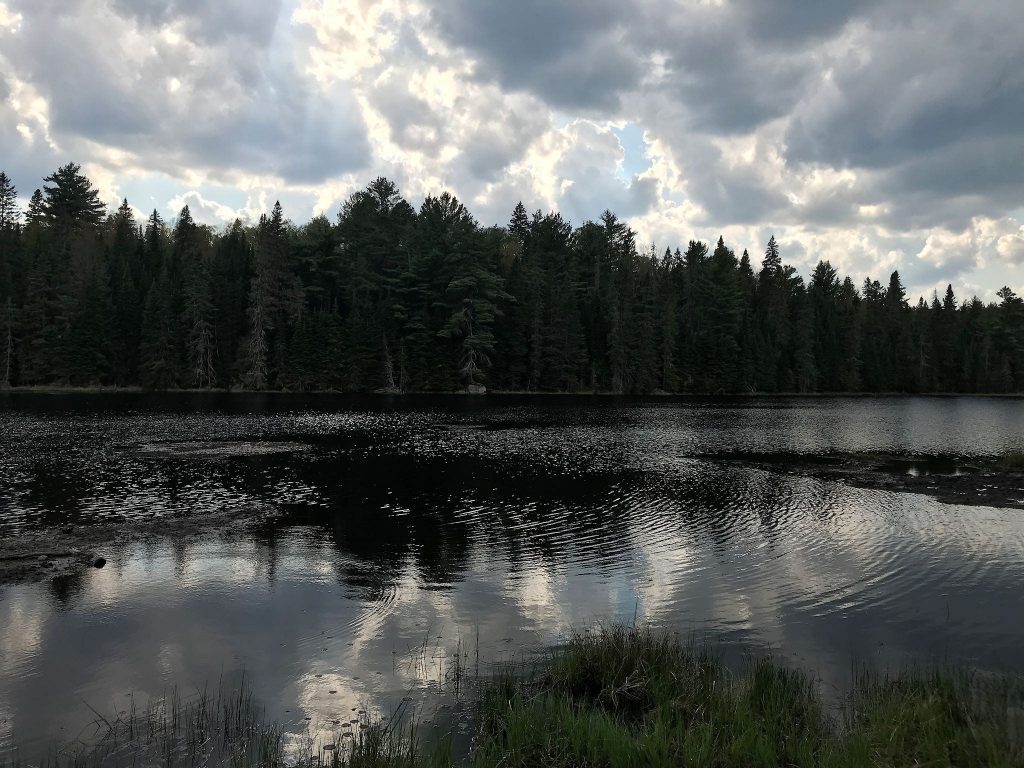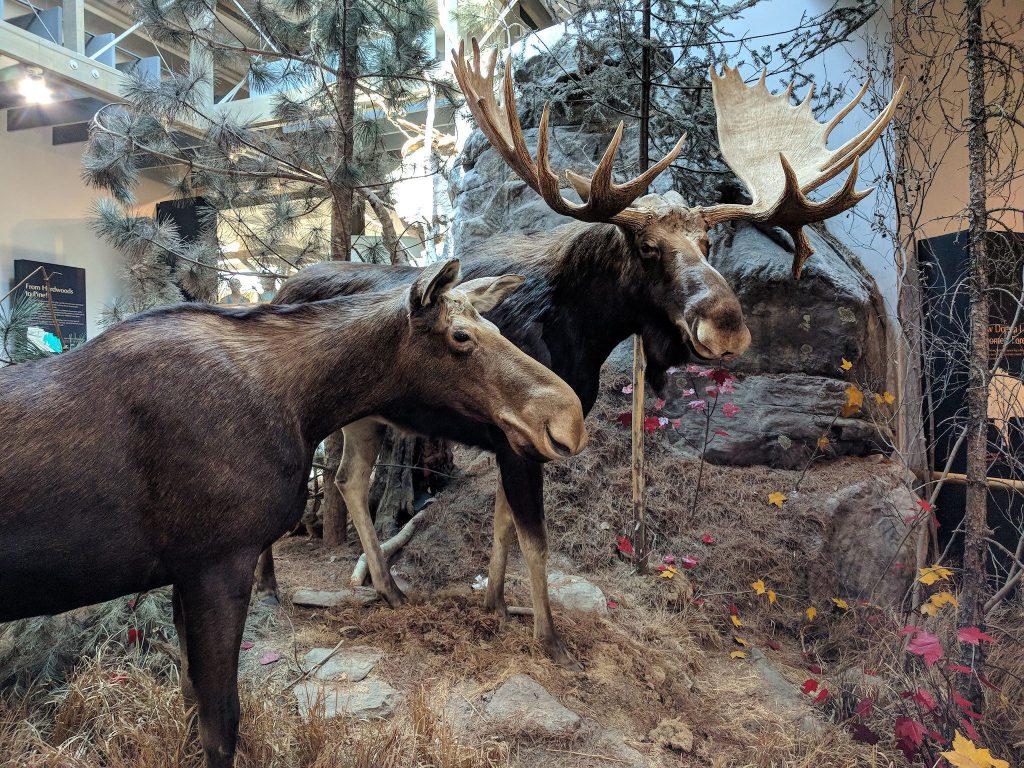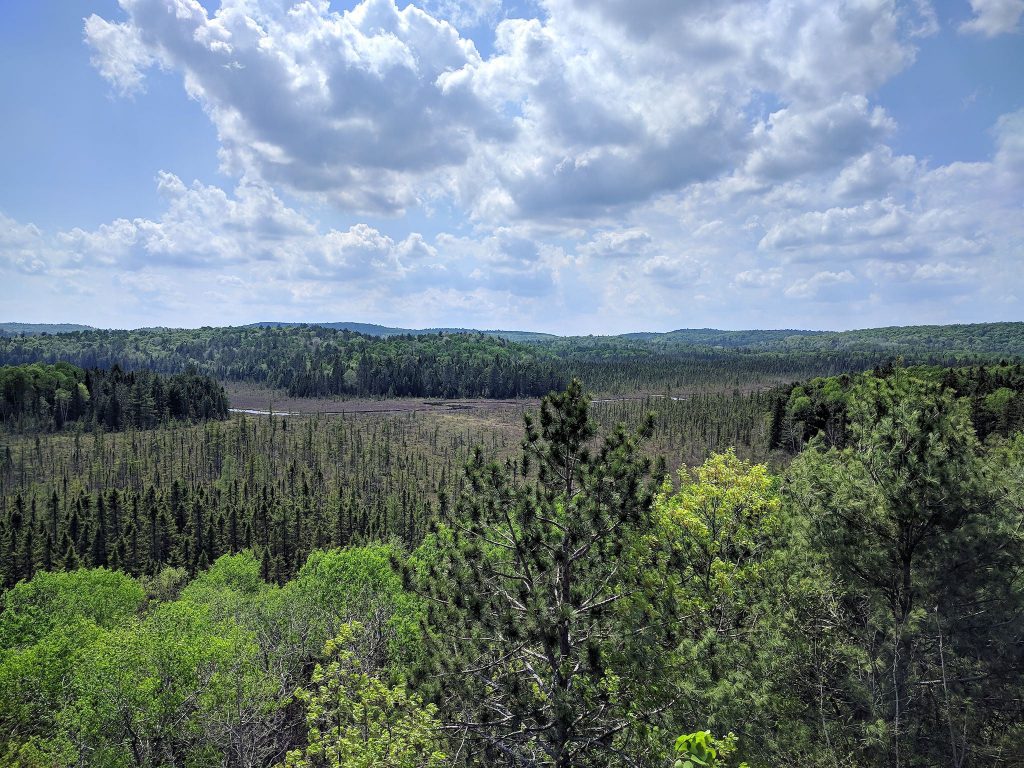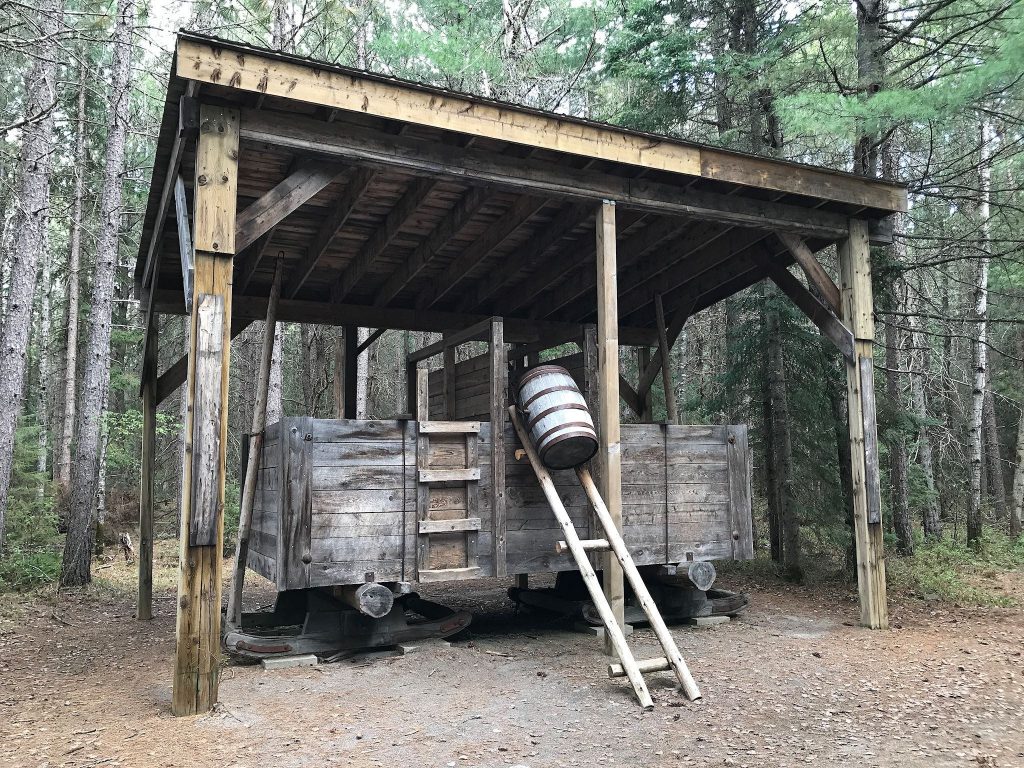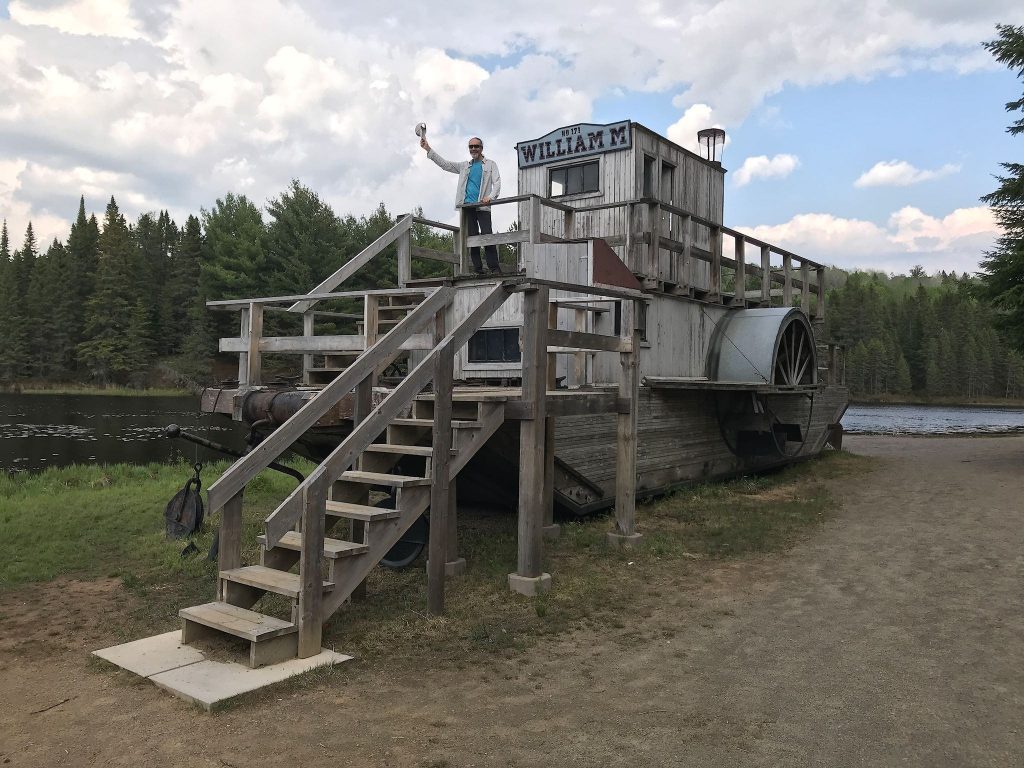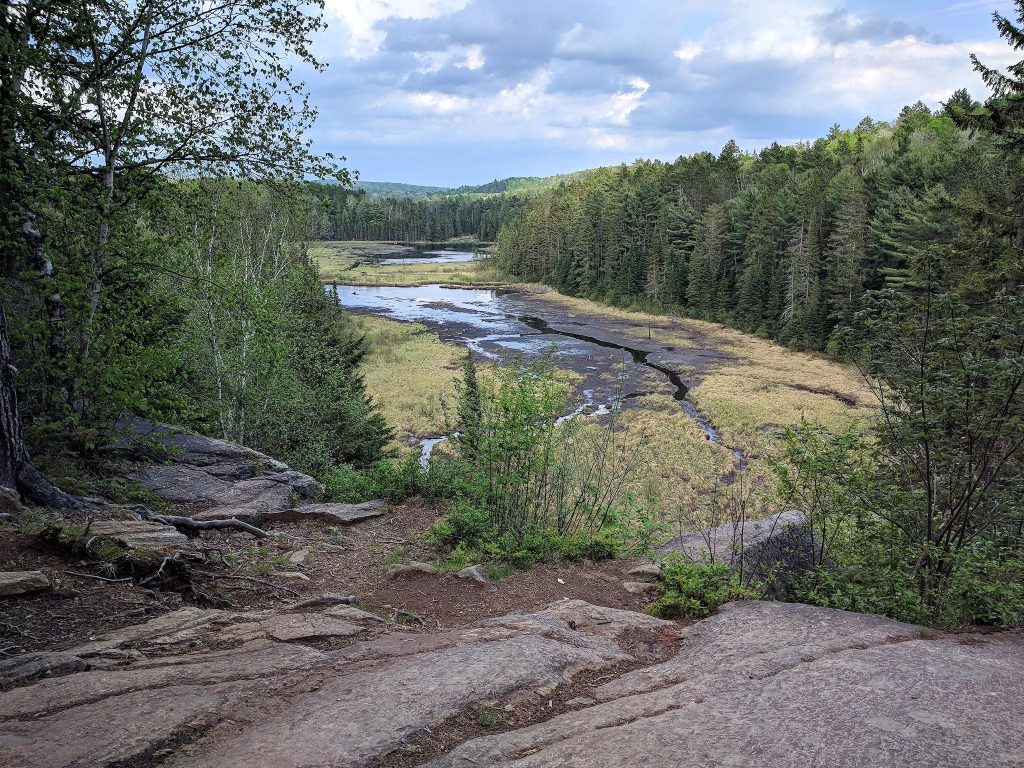
Algonquin Provincial Park is the oldest provincial park in Canada. Situated 3 hours west of Ottawa and 4 hours north of Toronto and open year-round, it’s the most popular park in the province and the country. The park is in the Ontario highlands, a relatively mountainous portion of the province where there’s a healthy mix of deciduous and coniferous trees and a long logging history. It’s best known for its 2,000 km (1,200 mi) of interconnected lakes and rivers, a canoer’s paradise.
We don’t have a canoe. We hiked.
Although our usual preference is to find longer, more remote hiking trails, we combined a few shorter trails due to the forecasts (50% chance of severe thunderstorms all day) and the complete lack of crowds in May. From our pretty campsite near the shore of Lake of Two Rivers, we were able to explore the Two Rivers trail to a set of cliffs and the shores of Mew Lake. Our favorite of the hikes was to a set of beaver ponds where we walked below, along and above a beaver dam, and along Amikeus Lake (a beaver pond), the site of several large beaver lodges.
Exhibits in the Algonquin Visitor Centre and interpretive stations along the shorter trails provided great information on the local forest. Of particular interest is how the mixed forest keeps evolving in cyclic generations based on the impact of forest fires. Deciduous hardwood trees grow back first in newly sun-exposed areas following a fire and are more resistant to disease and pests. However once they do die off, the smaller coniferous pines that have taken root on the forest floor quickly take over and produce shade that prevents hardwood growth until the next fire and the cycle begins anew.
We loved the Logging Museum interpretive trail that took us through reproductions of an 1880’s logging camp and a 1940’s sawlog camp, among other artifacts of logging history. Logging in the north (including Canada and northern New England) was primarily done in the winter by hardy souls who chopped enormous trees with axes. Logs were then dragged by horses over the snow to frozen lakes. As the lakes thawed in the spring, the logs were driven down rivers to seaports for transportation to Europe or to sawmills from which the lumber was used by those settling the new countries of Canada and the US. The endless forests of this part of Canada were assumed to be renewable (there were, yet not quite quickly enough – reread the prior paragraph). Logging continues today in Algonquin Park, although managed with modern logging techniques.
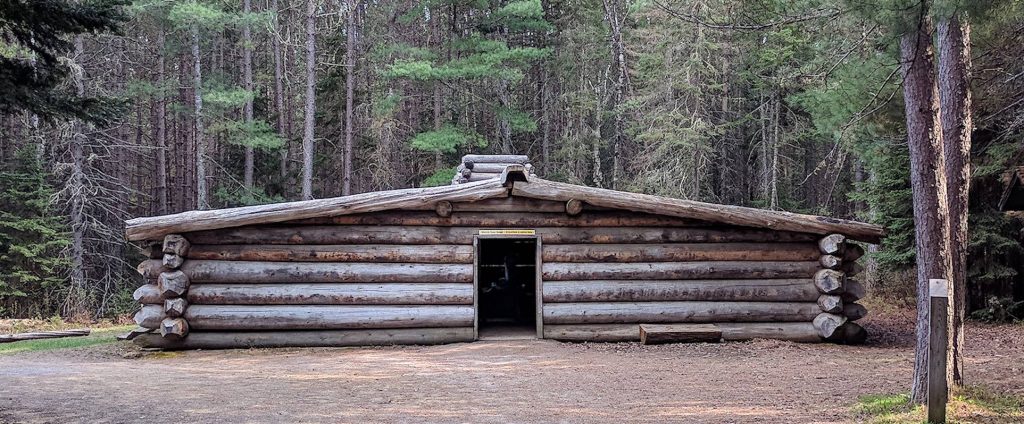
For anyone who’s interested, more Lake of Two Rivers Camp, Algonquin Visitor Centre, Two Rivers hike, Logging Museum and Beaver Pond hike pix…

